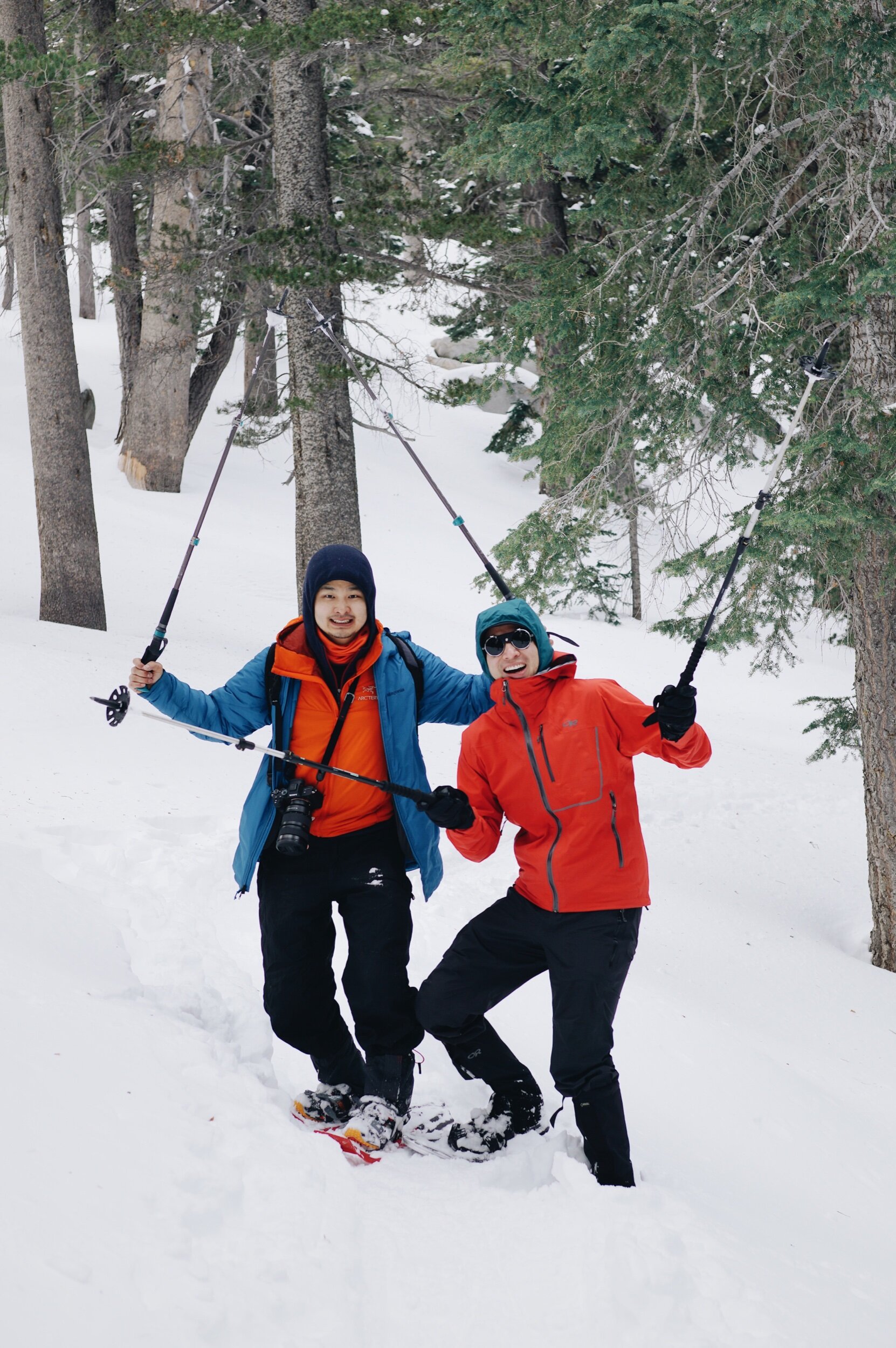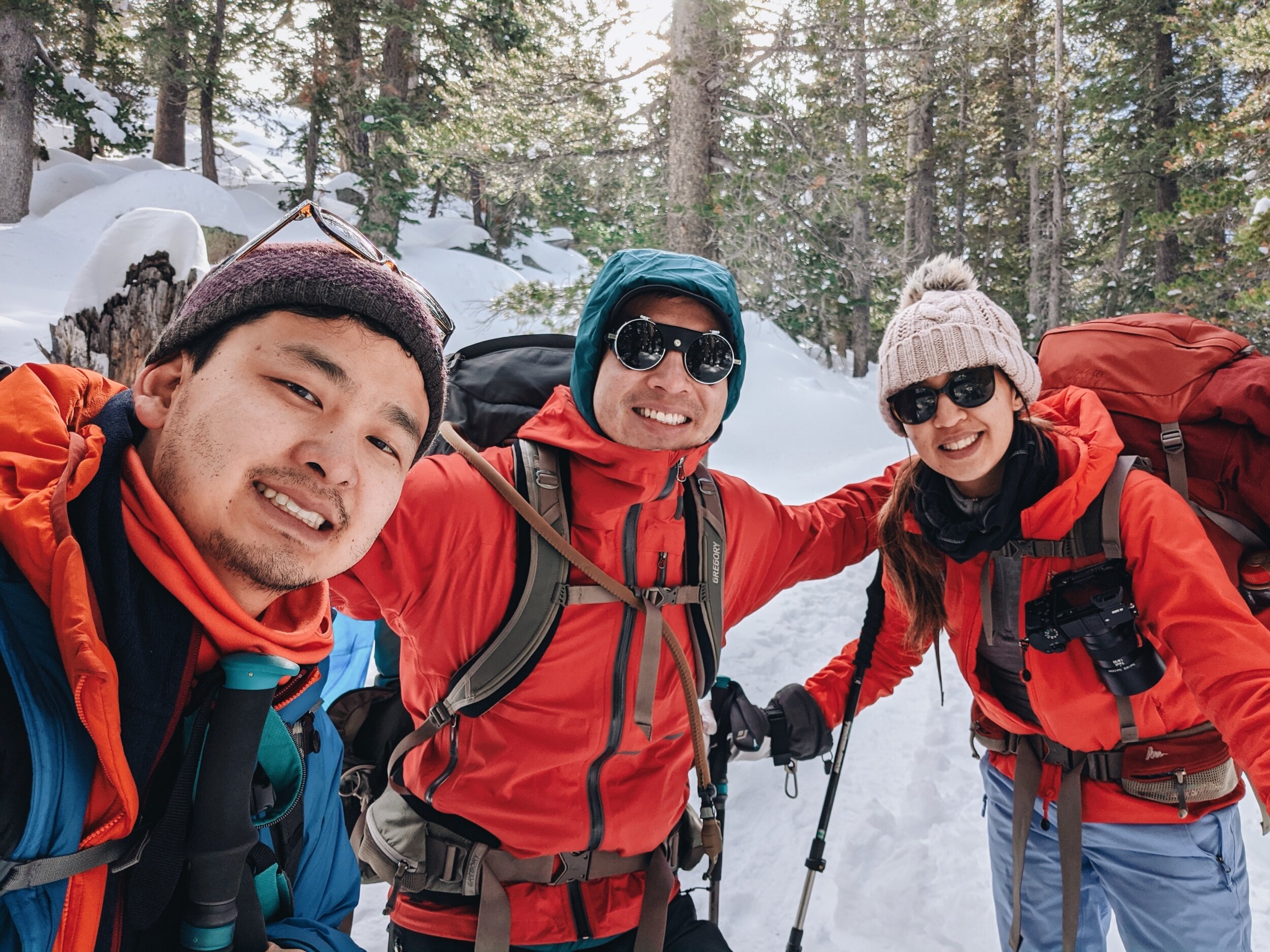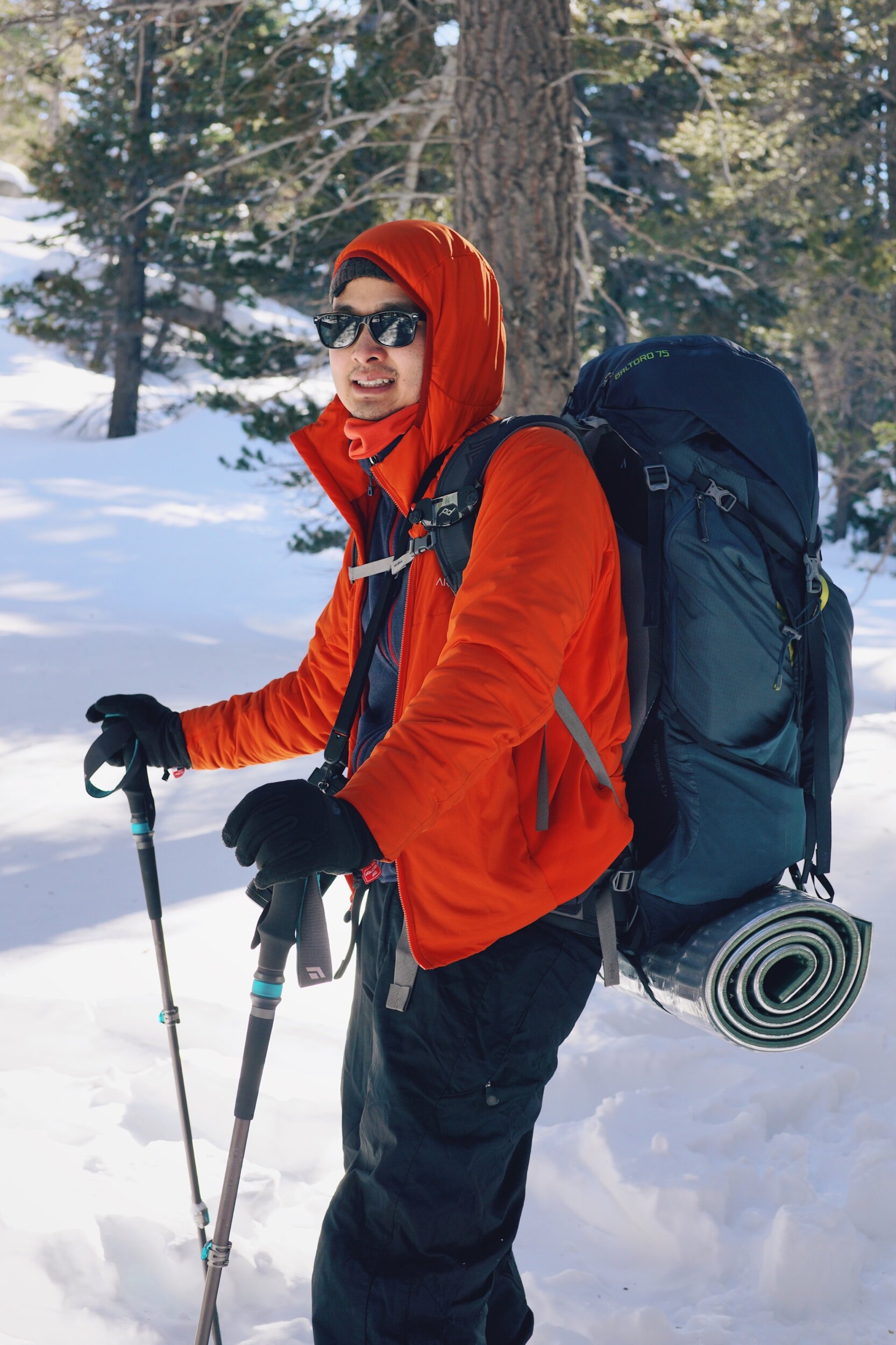A Fresh Start to the Year: Snowshoeing & Snow Camping
On a spontaneous whim, we decided to spend the final days of 2019, snowshoeing and camping in the snow for the very first time. We took in the fresh air, like a balm to the weary soul. We shed the many layers of adulthood, frolicked in the snow like children, and rekindled the shared joy of embarking on a new adventure. And in the profound peace of the wilderness, all to ourselves, we settled into a comfortable silence, reflected on the year and pondered the future.
We took the tram up to Mount San Jacinto near Palm Springs to an unexpected winter wonderland, several thousand feet above. It’s rather amazing how much gear you have to carry to stay warm in the 20’s during the day and the 5F at night. When we were moving, we stayed relatively warm and at most wore base layers and a lighter jacket. We kept our heavy coats handy for times we stood around longer, taking photos or breaks along the way.
As the cold tends to rapidly drain batteries and generate condensation within your camera lens, we kept our batteries and camera warm with heat packs strapped on with elastic hair ties. We rented snowshoes from REI and free extender tails for extra floatation on the snow as we carried our packs.
Some tips on snowcamping:
A four season tent is recommended, but if you don’t, it’s a good idea to build a bit of a trench around the spot you intend to set camp.
If you’re concerned about wind, pack some snow around the base of your tent fly to prevent wind from entering your tent.
It also helps to pack in the snow by walking around in a few circles so that you can easily get out of your tent later, without sinking in several feet if you’re not wearing your snowshoes.
Bring an extra tent base that’s larger than your tent. It makes for a nice spot to leave your pack overnight and have a staging area for removing/putting on your gear.
Inside the tent, we doubled up on sleeping pads for extra insulation. Try to avoid touching the sides of your tent during the night because condensation will build up overnight, causing those surfaces to be wet.
Make sure your sleeping bag is appropriately rated for the temperatures. We used a 15F bag, but wore all our clothes and were warm enough through the night.
Sleep with a bottle of hot water if you’re extra cold or use additional heat packs.
Go do your business before going into the tent. It’s cold enough, you’re not going to want to head back out!
Bring enough stove fuel. You’ll use more to melt snow into water.
One of my favorite parts was melting snow in the morning for water and instant oatmeal:
I always have a great time with this group. Looking forward to another snowshoeing trip coming up soon. If you’d like to hear more about gear to bring for snowshoeing or snow camping, leave a comment! Thanks for reading!














